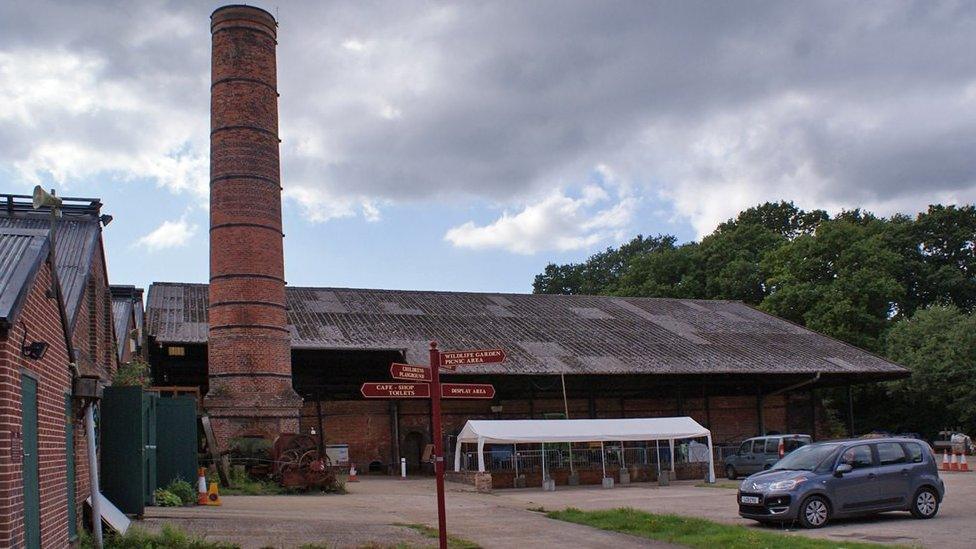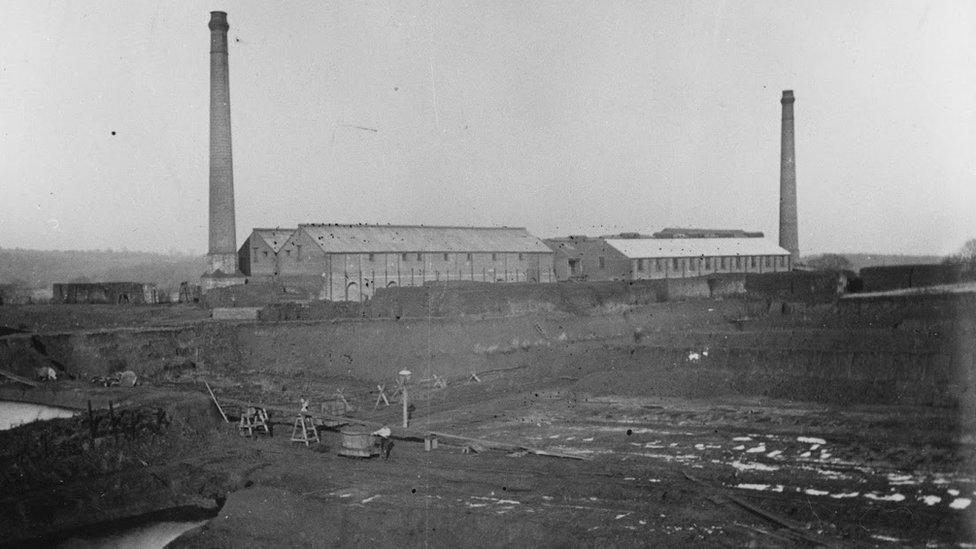Bursledon Brickworks: Housing plan to help save industrial heritage site
- Published

Bursledon Brickworks is now a museum devoted to industrial heritage
Homes could be built on land alongside a 19th Century brickworks in a bid to secure its future.
Now a museum, Bursledon Brickworks near Fareham, Hampshire, is the UK's last steam-driven works of its kind.
A proposal has been submitted for 12 new homes south of the main museum buildings.
The museum said selling land for residential use would raise "significant funds" for restoration work.
Bursledon Brickworks is a Grade II* listed site with a brickmaking kiln, processing sheds, specialised enclosures, engine and machinery houses, along with a cafe and a museum.
Planning documents state any development would be delivered "in association with the continuing operation" of the museum.
They said: "Due to the listed nature of the Brickwork Museum, these buildings require essential repairs and restoration works to safeguard their future as heritage assets.
"The purpose of developing the land for residential dwellings is to enable the land to be sold to a developer in order to raise significant funds that can enable the works to the listed buildings to take place."

At its height, the brickworks was one of the biggest in the region
However, a letter written by a senior council planner said the application did not conform with the local development strategy, "being located outside the urban area and in an area of special landscape quality".
It warned the area had been deemed as unsuitable for housing due to its isolated location and high noise levels from the nearby M27 motorway.
Earlier this year the brickworks was awarded a £246,000 grant from Historic England to pay for repair work to its roof in order to protect the kiln and remove it from the "at risk" register.
Bursledon Brickworks was founded in 1897 by the Ashby family who were successful builders merchants in Southampton.
The clay used to make the bricks was originally dug by hand in pits close to the buildings.
By the 1930s it was turning out more than 20 million bricks a year.
The site closed in 1974 and was later restored by volunteers to become a museum dedicated to the region's industrial heritage.

Follow BBC South on Facebook, external, Twitter, external, or Instagram, external. Send your story ideas to south.newsonline@bbc.co.uk, external.
Related topics
- Published30 March 2023
